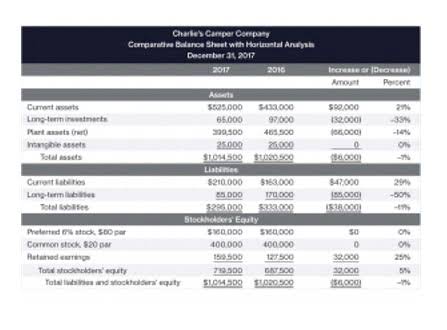Content

In so doing, we play a critical role in building a better working world for our people, for our clients and for our communities. Equity investors take more risk by investing money in a company in exchange for shares, meaning they could lose it all. Since an equity investor financial forecast for startups becomes a shareholder when he/she invests in your company you will (partly) lose control of the firm. Moreover, you will need to share your profits with your new shareholders and sometimes they might want to be actively involved in the management of your company as well.
How do you Analyse startup financials?
- Revenue and Sales Forecast: This involves estimating the amount of revenue the startup is likely to generate over a given period of time.
- Cash Flow Analysis: This involves analyzing the cash inflows and outflows of the business.
Think through each of them separately, add them together at the end. Read our article here to know whether you should use a financial model for your business. While you could leave it here, I would also recommend creating quarterly views for all of these metrics. Your business goes through ups and downs each month, and monthly metrics aren’t always the best representation of the overall state of your business. Calculate the customer churn % by dividing the current month’s customer churn by the previous month’s total customers.
Scenarios
It is a day all startup founders fear and it is a day you should work toward never getting too close to. Another important metric to add to the cost of an employee in your model is wage inflation. We are seeing wages go up 10% to 25% a year at the moment for many technology employees, so don’t forget to include a salary increase annually. Our free templates have an assumption area where you can easily input this wage increase. You want to make sure you’re not… You want to make sure that you run out of cash when you expect to run out of cash which hopefully aligns with you being worth more and raising more capital. Once you’ve got all this put together you can make sure that it’s carefully shared with your department leaders so they can come back and build their detailed budgeting plans with you.
You can understand your company’s financial health and capacity to pay your debts through your balance sheet. Pro forma statements may be hypothetical, but they help companies prepare for an uncertain future. You risk overspending by creating a budget without financial forecasting. In fact, most of your financial decisions would be ill-informed without the input of a financial forecast’s results. Though they are technically part of the cost assumptions, personnel costs (i.e., salaries) are usually by far the largest cost component at this stage of a business. It’s handy to keep them in a separate sheet to help keep track of headcount and strategise around future hiring decisions.
How to do financial forecasting in 7 steps
Some candidates may qualify for scholarships or financial aid, which will be credited against the Program Fee once eligibility is determined. Please refer to the Payment & Financial Aid page for further information. Harvard Business School Online’s Business Insights Blog provides the career insights you need to achieve your goals and gain confidence in your business skills.
However, some aspects of financial forecasting may change depending on the type and purpose of the forecast, as will be discussed later. Failure to conduct regular financial forecasting https://www.bookstime.com/articles/startup-bookkeeping leaves you flying blind. Cost should be a function of revenue; it is the total resources required for the business to generate and continue generating the forecasted revenue.
Discover Corporate and Business Credit Cards
If the leads are added on top of the leads that the sales team originated, a check is required to ensure the sales team has enough capacity to handle these additional leads. The partner at my previous venture capital firm used to tell me that financial forecasting for startups should start at a granular level. Coming from a macro hedge fund background, I initially did not understand what that meant, as I was used to forecasting based on trends, recurring revenue, and benchmarks.
- As a startup, one of the most important things you can do is create a financial model.
- So being aware of and preparing for different scenarios is critical to any decision-making exercise.
- The projected financials are usually prepared on a spreadsheet (e.g. Excel or Google Sheet).
- Although your main changes should happen on the Revenue Model and Hiring Plan tabs, there are some changes you probably should make directly on the Operating Model.
- Unfortunately, it’s prevalent that founders undercalculate them and end up burning through money at a faster rate than expected.
They provide a more objective approach to predicting the future, as they consider historical trends to make assumptions about what may happen in the future. It can be worthwhile to create several scenarios of a financial model (worst vs. base vs. best case) and to check for common pitfalls in financial modeling for startups. Creating multiple scenarios and performing sanity checks helps you get closer to a realistic case, instead of presenting an overly optimistic or an unattractive case. Working capital is calculated based on the number of days your sales and payables are outstanding and the number of days you hold inventory before selling it. Therefore, a financial model might need a separate scheme that calculates working capital based on revenues, cost of goods sold and days outstanding. Overall, forecasting startup financial performance is a complex process that requires a combination of analysis and experience.
Financial forecasting is a process where a business leverages its current and past financial information to project its future financial performance. Forecasts are typically applied to assist with budgeting, financial modeling, and other key financial planning activities. Pro forma statements are incredibly valuable when forecasting revenue, expenses, and sales. These findings are often further supported by one of seven financial forecasting methods that determine future income and growth rates.
- This includes your current cash balance and your expected fundraising round amounts.
- A final financial forecasting model used by startups is the burn rate forecast.
- Click here to jump to our free financial model templates that you can use on your own.
- When two or more variables directly influence a company’s performance, business leaders may use the multiple linear regression method.
- DFC analysis predicts how much money the company will generate in the future.
- With this method, a business sends multiple rounds of questionnaires to a panel of experts, covering the company’s financial data.
- The goal of updating your SaaS financial model on a monthly basis is to give you the tools you need to make operational decisions about your company.
